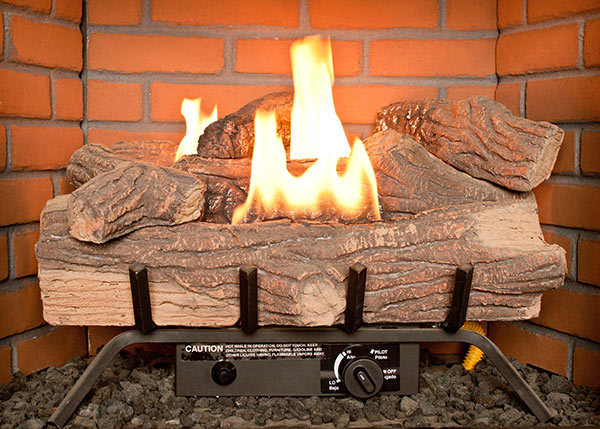
It’s hard to beat the convenience of a gas fireplace in your home. With the touch of a button, you can enjoy the warmth and glow of a beautiful fire with no firewood to load or ashes to clean up. But gas fireplace safety should still be on the top of your mind whenever you use it! Like any burning appliance, there are steps that every homeowner should take to minimize potential risks from the wear-and-tear that appliances experience over the years.
Read on to learn more about gas fireplace safety and the maintenance or protective steps you can take to keep your home safe!
Keep Up with Maintenance
Every fireplace needs maintenance. This applies to gas fireplace safety in the same way as it would apply to wood-burning fireplace safety! The bare minimum for keeping your gas fireplace operating safely is to have it checked by a professional once every year.
These yearly inspections are critical for ensuring the components of your gas fireplace haven’t deteriorated, loosened their connections, or built-up with byproducts of combustion that can lead to problems. While no wood is being burned, combustion is still happening which means your fireplace needs to be safely containing the heat and exhausting harmful gasses produced inside the firebox.
Especially here in southeast Michigan and northwest Ohio, where the winter freezing and thawing period can be harsh, any chimney can experience significant masonry damage. No matter the type of fireplace you have, it’s important to have certified chimney sweeps inspect and clean them to avoid long-term issues!
Install Carbon Monoxide Detectors in Your Home
Gas fireplace safety includes preparing your house for potential risks. Fortunately, gas fireplaces are extremely safe. However, they are a possible source of carbon monoxide in your home, which means you need to stay alert to leaks of this harmful gas.
Unlike smoke, carbon monoxide is completely invisible and odorless. You won’t be able to tell if it’s in the air without a specialized carbon monoxide detector. Every home should have these installed regardless, as any gas appliances can leak it. At the bare minimum, you should have them in your home around the room where your fireplace is, and in rooms where you often spend time – family rooms, bedrooms and kitchens.
Gas Fireplaces Doors Can Get Hot
Gas fireplaces are a popular way for homes to zone heat certain rooms. Of course, this means that protective layer closest to the fireplace will also get hot – the glass panel. While most adults are aware of the threat from fires, curious children may wander too close or even put their hands directly on the glass.
Particularly cautious homeowners can look at barriers that add additional layers of protection between the interior and exterior of the fireplace. This helps mitigate some risks, but heat will always find a way through. It’s important for any family home with a gas fireplace to spend time educating their kids on gas fireplace safety like staying a few feet away from the fireplace!
Keep Flammable Objects Away
Direct contact isn’t the only risk with a gas fireplace. Hearths and mantels around a fireplace are a favorite place for decorations, especially during the holiday seasons. The risk for homeowners comes when these decorations are placed too close to the source of the heat, such as streamers that hang down or other easily flammable objects that will experience direct heat from the fireplace.
Again, gas fireplaces can be safer than wood burning fireplaces, but they still pose the same risks as any heat source. The closer a flammable object is, the greater the chance of an unexpected ignition!
Don’t Run Your Fireplace Unsupervised
Vented gas fireplaces can technically be run indefinitely. When in proper working order, the byproducts of combustion will be exhausted safely out of your home and your air quality won’t be adversely affected. Of course, any appliance has the potential for failure, which is why it’s important not to run your gas fireplace when you won’t be around to check in from time to time.
If you have children or pets, one errant hit could crack the glass of your fireplace while you aren’t looking. This could lead to leaking gas. It also exposes them to risks of simply being unsupervised near a burning appliance.
Gas fireplace safety for ventless fireplaces is even more important. Because they don’t exhaust gasses out of your home, ventless fireplaces will introduce byproducts into the air throughout your house. Therefore, they shouldn’t run for more than a few hours at a time. They are definitely not to be run when you plan to leave the house or go to sleep!
Schedule an Inspection of Your Chimney Today!
Our CSIA Certified Chimney Sweeps will inspect your fireplace and chimney to make sure your chimney liner is in excellent condition, or to schedule an appointment to install a new liner if necessary! Contact us today! We’ll get you set up right away so you can have peace of mind.
Call Us: 1-800-438-3583
Email Us: office@drflue.com
Office Hours: Mon-Fri: 8am-4pm
Connect with Doctor Flue on Social Media

